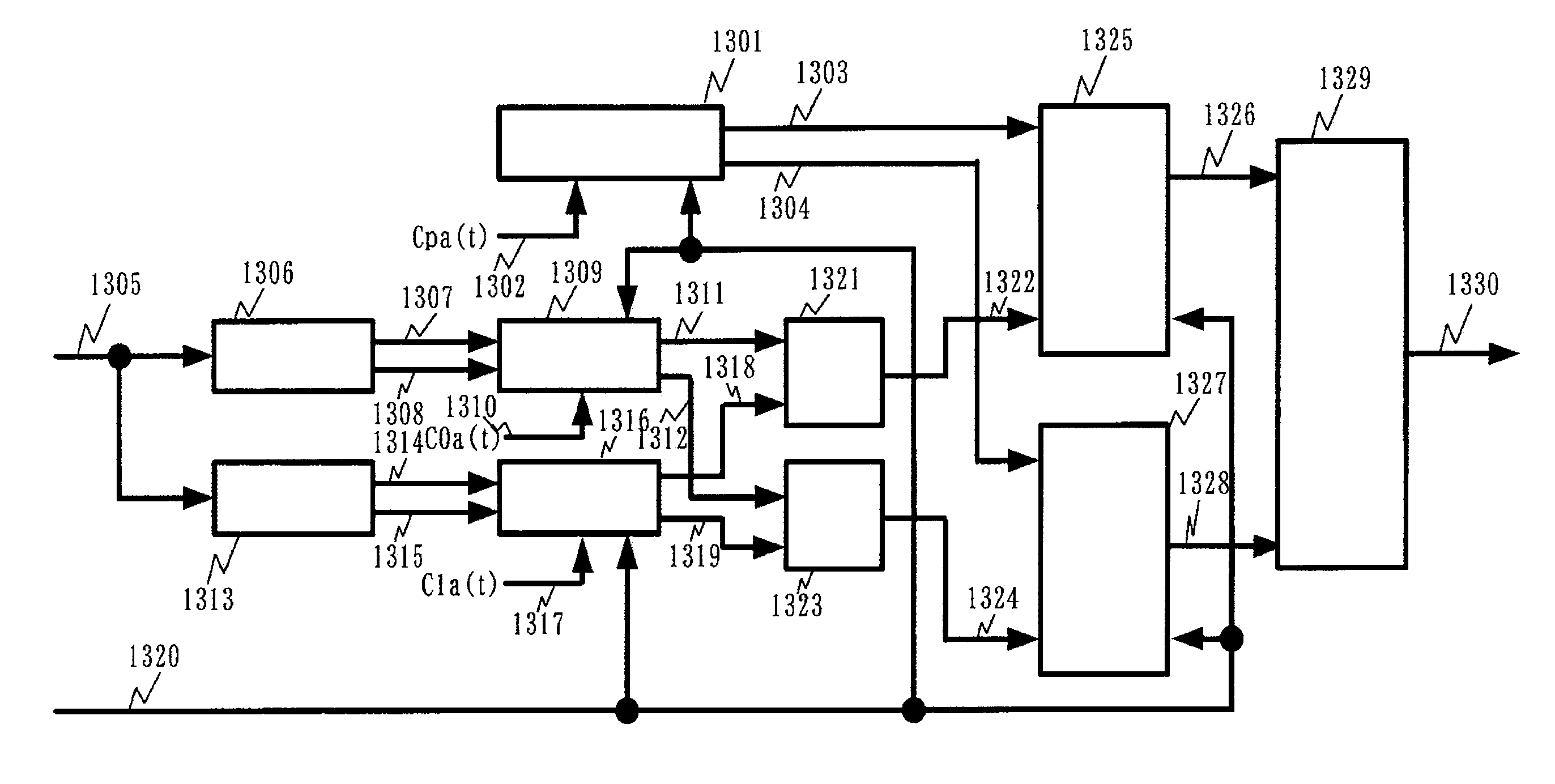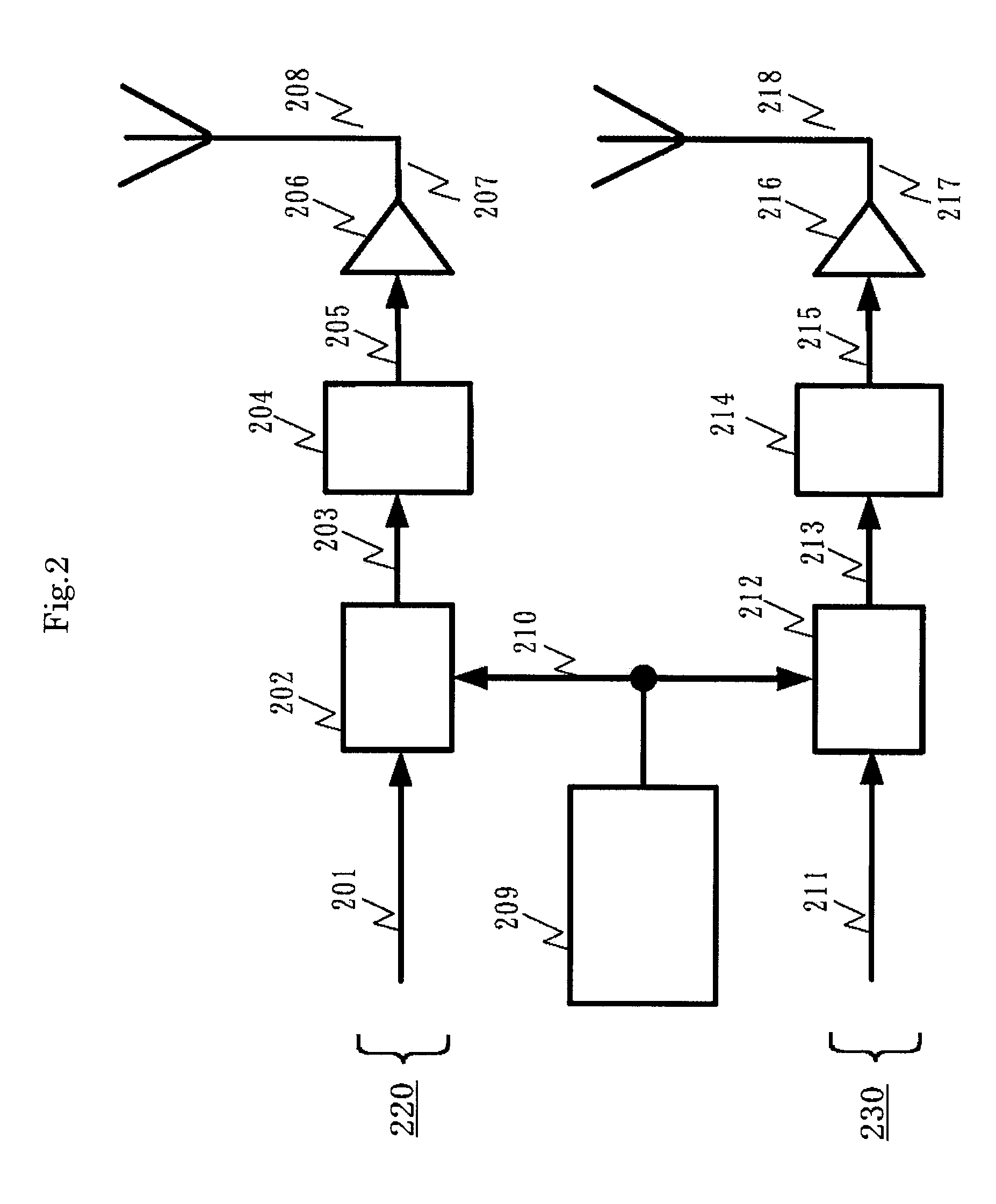Reception apparatus
a technology of reception apparatus and receiver, which is applied in the field of transmission, can solve the problems of ignoring the synchronization of channels in the same frequency, and the structure encounters difficulty in achieving, and achieves the effect of accurately estimating channels
- Summary
- Abstract
- Description
- Claims
- Application Information
AI Technical Summary
Benefits of technology
Problems solved by technology
Method used
Image
Examples
exemplary embodiment 1
[0125] In a transmission method where modulation signals of a plurality of channels are multiplexed to the same frequency band, at the time when a demodulation symbol is inserted in a channel, in another channel symbol, the same phase and quadrature signals in the in-phase-quadrature plane are made to be zero signals. The foregoing method and a transmission apparatus as well as a reception apparatus employed in the method are described in this first embodiment.
[0126]FIG. 1 shows frame structure 120 of channel A and frame structure 130 of channel B along a time axis. Channel A has pilot symbols 101, 104, 107, guard symbols 102, 105, 108, and data symbol 103, 106. Data symbols, for instance, have undergone QPSK (quadrature phase shift keying) modulation. Channel B has guard symbols 109, 112, 115, pilot symbols 110, 113, 116, and data symbols 111, 114. Data symbols, for instance, have undergone QPSK modulation.
[0127] Pilot symbol 101 of channel A and guard symbol 109 of channel B are...
exemplary embodiment 2
[0239] In this second embodiment, a reception apparatus is described. The reception apparatus comprising the following elements: [0240] a received signal strength intensity estimation unit for estimating a reception received signal strength intensity of a signal received by respective antennas and outputting an estimation signal of the reception received signal strength intensity of the reception signal; [0241] a phase difference estimation unit for receiving a transmission path variation estimation signal of a channel of the respective antennas, finding a phase difference of the transmission path variation estimation signal between the respective antennas, and outputting a phase difference signal; and [0242] a signal selection unit for receiving a reception quadrature baseband signal of the respective antennas, a transmission path variation estimation signal of each channel of the respective antennas, a reception electric field estimation signal of the reception signal, the phase d...
exemplary embodiment 3
[0310] The third embodiment describes a transmission method, which handles the following frame structure of signals transmitted from respective antennas: [0311] a symbol for estimating transmission path variation is inserted into the frame; [0312] the symbols is multiplied by a code; [0313] the symbols of the respective antennas are placed at an identical time; and [0314] the codes of the respective antennas are orthogonal to each other. The third embodiment also describes a transmission apparatus and a reception apparatus both used in the foregoing transmission method.
[0315]FIG. 11 shows frame structure 1120 in accordance with spread spectrum communication method A, and frame structure 1130 in accordance with spread spectrum communication method B. Pilot symbols 1101, 1103, 1105 of spread spectrum communication method A are multiplied by a code. Data symbols 1102, 1104 of spread spectrum communication method A are multiplied by a code.
[0316] Pilot symbols 1106, 1108, 1110 of spre...
PUM
 Login to View More
Login to View More Abstract
Description
Claims
Application Information
 Login to View More
Login to View More - R&D
- Intellectual Property
- Life Sciences
- Materials
- Tech Scout
- Unparalleled Data Quality
- Higher Quality Content
- 60% Fewer Hallucinations
Browse by: Latest US Patents, China's latest patents, Technical Efficacy Thesaurus, Application Domain, Technology Topic, Popular Technical Reports.
© 2025 PatSnap. All rights reserved.Legal|Privacy policy|Modern Slavery Act Transparency Statement|Sitemap|About US| Contact US: help@patsnap.com



